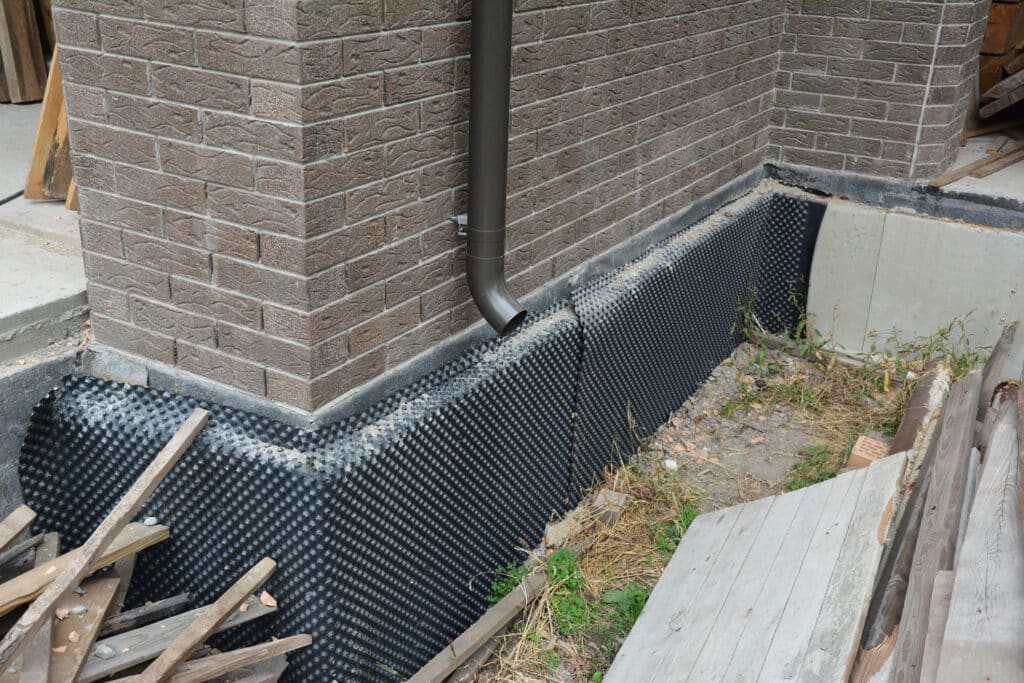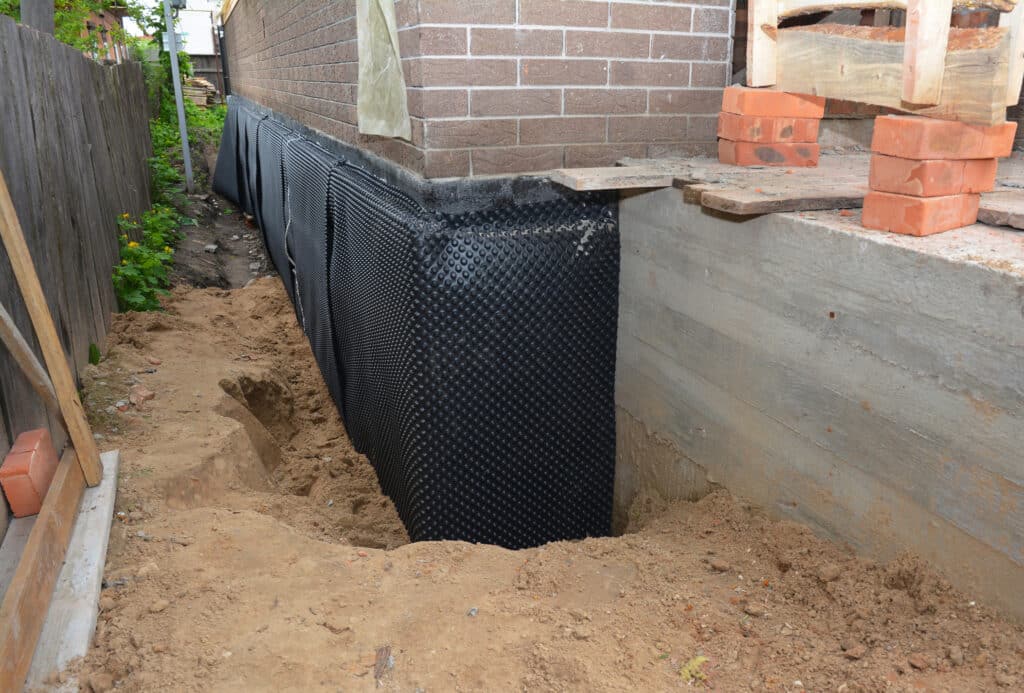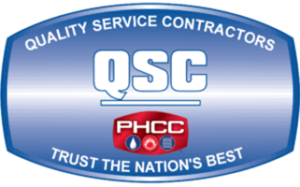Welcome to the comprehensive guide on basement waterproofing, tailored specifically for residents of Laytonsville, MD. In this article, we’ll explore essential steps and expert advice to safeguard your basement against water damage. Basement waterproofing is a crucial investment for any homeowner, especially in areas prone to heavy rainfall or high water tables. By following the guidelines provided, you can ensure a dry and damage-free basement environment.
Understanding the importance of basement waterproofing can save homeowners from costly repairs in the future. Water damage can lead to significant issues like mold growth, structural damage, and decreased property value. In Laytonsville, where weather conditions can fluctuate, taking preemptive measures is key. This guide aims to equip you with the knowledge and techniques to effectively protect your home.
While this guide focuses on Laytonsville, the principles of basement waterproofing apply universally. Neighboring cities like Kensington, MD, also benefit from these practices due to similar geographical and climatic conditions. By applying the methods discussed here, you can enhance the longevity and integrity of your home’s foundation.
Stay tuned as we delve deeper into the steps of basement waterproofing, providing you with a detailed roadmap to a safer and more secure basement. From identifying potential water entry points to selecting the right waterproofing materials, each segment of this guide is designed to help you through the process with ease and confidence.
Understanding the Basics of Basement Waterproofing
Understanding the basics of basement waterproofing is essential for maintaining a dry and healthy home environment. This process involves several key steps that address both the prevention and management of water intrusion. In Laytonsville, MD, where local weather can contribute to basement dampness, it’s crucial to understand these fundamentals to protect your property. Basement waterproofing isn’t just a preventative measure; it’s a proactive approach to enhancing your home’s value and usability.
The first step in effective basement waterproofing is to identify potential sources of water entry. Common issues include cracks in the foundation, poor drainage systems, and ineffective sump pumps. It’s vital to inspect these areas regularly and address any concerns promptly to prevent moisture from seeping into your basement. This initial assessment can save you from more extensive and costly repairs down the line, ensuring that your basement remains dry and functional.
Choosing the right waterproofing methods and materials is another critical aspect. There are various techniques available, ranging from interior water drainage systems to exterior waterproofing coatings. Each method has its advantages and suitability, depending on the specific conditions and needs of your home in Kensington, MD. Consulting with a professional can help you make informed decisions about which waterproofing strategies will be most effective for your situation.
Finally, maintaining your waterproofing systems is key to long-term success. Regular checks and maintenance ensure that your systems function correctly and continue to protect your basement from water damage. This includes cleaning gutters, inspecting sump pumps, and checking for new cracks or moisture issues. By staying vigilant and addressing problems early, you can keep your basement dry and avoid the disruptions caused by water damage.

Signs You Need Basement Waterproofing in Laytonsville
Recognizing the signs that you need basement waterproofing in Laytonsville can save you from extensive and costly damage. One of the most obvious indicators is water stains on walls or flooring, which suggest moisture is seeping through. These stains might appear faint at first but can become more pronounced over time. If you notice any form of pooling water, especially after rainfall, it’s a clear sign that your current waterproofing measures might be inadequate.
Another telling sign is a musty odor in your basement, which often indicates mold or mildew growth due to excess moisture. This not only affects the structural integrity of your home but also poses health risks. Additionally, if your basement walls or floor feel damp to the touch, this is a direct indication of moisture penetration that needs immediate attention. In Laytonsville, addressing these issues promptly can prevent the progression of damage.
Cracks in the basement walls or floor are also critical signs that should not be ignored. Even small fissures can allow water to enter, leading to significant problems over time. It’s essential to monitor these cracks regularly and consider basement waterproofing solutions if they appear to widen or leak. In areas like Kensington, MD, where environmental conditions can exacerbate these issues, timely intervention is crucial.
Finally, if your basement experiences flooding during periods of heavy rain, it’s a definitive sign that your waterproofing system is failing. This can lead to serious issues, including damage to any belongings stored in the basement, as well as potential foundation problems. Consulting with a basement waterproofing expert can provide you with the best solutions to keep your basement dry and secure. By recognizing these signs early, homeowners in Laytonsville can take proactive steps to protect their property and maintain a healthy living environment.
Choosing the Right Waterproofing Method for Your Basement
Choosing the right basement waterproofing method is crucial for homeowners in Laytonsville, MD, and requires careful consideration of various factors. The geographical location, soil type, and the specific construction of your home all play significant roles in determining the most effective approach. It’s not just about preventing water from entering; it’s about choosing a solution that integrates seamlessly with your property’s unique characteristics. Consulting with a professional can provide valuable insights into which methods will offer the most robust protection.
Exterior waterproofing is one of the most comprehensive methods, involving the application of a waterproof coating to the outside walls of the basement. This method not only prevents water from entering but also protects the structural integrity of your foundation. It’s particularly suitable for areas with high water tables or significant rainfall, like Kensington, MD. Although this method can be more costly and labor-intensive, its long-term benefits in preventing water damage are substantial.
Interior waterproofing is another effective option, especially for addressing issues that cannot be tackled from the outside. This method includes the installation of drainage systems inside the basement to channel water away from the foundation. Sealants can also be applied to walls and floors to prevent moisture penetration. This method is often less disruptive to your property and can be a cost-effective solution for managing minor water intrusion problems.
Finally, combining various waterproofing techniques can often yield the best results. For instance, integrating both interior and exterior methods can provide double protection, ensuring that your basement remains dry and secure. Regular maintenance of these systems is also essential to ensure their effectiveness over time. By selecting the right basement waterproofing strategies, homeowners in Laytonsville can safeguard their homes against water-related issues and maintain a healthy living environment.
Step-by-Step Guide to External Basement Waterproofing
External basement waterproofing is a comprehensive approach that involves treating the outside of your home’s foundation to prevent water from entering. This method is particularly effective in areas like Laytonsville, MD, where the geography may contribute to higher moisture levels. The first step in this process is to excavate the soil around your home’s foundation, allowing access to the exterior basement walls. This step is crucial as it lays the groundwork for a successful waterproofing system.
Once the excavation is complete, the next step is to clean and inspect the exterior walls for any cracks or damage. It is essential to repair these defects before proceeding. Waterproofing membranes or coatings are then applied to the walls, providing a robust barrier against water penetration. These materials are designed to withstand harsh environmental conditions and ensure long-term protection of your basement.
In addition to membranes, a drainage system is often installed along the foundation’s perimeter. This system helps to collect and redirect water away from your home, further enhancing the effectiveness of the waterproofing. Materials such as gravel and perforated pipes are typically used to facilitate proper drainage. Ensuring that this system is correctly installed is key to preventing water accumulation around the foundation, which can lead to pressure and eventual leaks.
Finally, once the waterproofing and drainage systems are in place, the excavated soil is backfilled. It is important to ensure that the soil is properly compacted to avoid any future settling that could disrupt the effectiveness of the waterproofing. Residents of neighboring Kensington, MD, also find these steps beneficial, given the similar environmental conditions. By following this step-by-step guide to external basement waterproofing, homeowners can significantly enhance the durability and dryness of their basements, protecting their homes from potential water damage and associated problems.
Internal Waterproofing Solutions for Laytonsville Homes
Internal waterproofing solutions offer a vital line of defense for homes in Laytonsville, MD, especially when external methods are not feasible or sufficient. This approach targets the interior of your basement, dealing directly with water that has entered your space. By channeling water away from the foundation, internal systems help maintain the structural integrity of your home. These solutions are particularly useful in scenarios where external excavation is impractical due to space constraints or landscape features.
One popular internal method is the installation of a drainage system beneath the basement floor. This system involves the creation of a channel around the perimeter of the basement floor, which collects water and directs it to a sump pump. From there, water is pumped out and away from the home, keeping the basement dry. This method is effective in managing water that penetrates through the ground, ensuring it doesn’t pool and cause damage or mold growth.
Another key component of internal waterproofing is the use of sealants and coatings applied to the walls and floor of the basement. These products are designed to block moisture penetration and are particularly useful for sealing minor cracks and crevices. Waterproofing paints and sealants can be applied as a DIY solution, but for best results, professional application ensures that no spots are missed and the coating is evenly distributed.
Lastly, it’s important to maintain a properly functioning internal waterproofing system. Regular checks of the sump pump, drainage channels, and sealant conditions are essential to ensure ongoing effectiveness. Homeowners in neighboring Kensington, MD, also benefit from these practices, given the similar environmental conditions. By integrating these internal solutions, residents can significantly enhance their basement’s resistance to moisture and extend the life of their home’s foundation.
Preventative Measures to Keep Your Basement Dry
Taking proactive steps to prevent moisture buildup is essential for maintaining a dry basement. In Laytonsville, MD, where environmental conditions can promote dampness, implementing preventative measures is particularly crucial. One effective strategy is to ensure proper landscaping around your home. Sloping the ground away from your foundation helps to divert rainwater and melting snow, preventing them from pooling near your basement walls. This simple adjustment can significantly reduce the risk of water seeping into your basement.
Another key measure involves managing the water flow from your roof. Gutters and downspouts play a vital role in basement waterproofing by channeling roof runoff away from your foundation. It’s important to keep these components clean and in good repair. Ensuring that downspouts extend several feet from the house can prevent water from accumulating around the foundation, which is a common problem in both Laytonsville and Kensington, MD. Regular maintenance of your roofing system can prevent many potential basement moisture issues.
Moisture barriers are also an integral part of preventing basement dampness. Applying a waterproof coating or membrane to the interior of your basement walls can block moisture from penetrating through. These barriers are especially useful in older homes where the exterior waterproofing may have deteriorated over time. Additionally, installing a vapor barrier beneath the basement floor can protect against moisture rising from the ground. These barriers provide a strong defense against humidity, keeping your basement dry and comfortable.
Lastly, consider the benefits of a dehumidifier in your basement, especially during the humid months. A dehumidifier can significantly reduce the moisture level in the air, which helps prevent the condensation that can lead to mold and mildew growth. For homes in areas like Laytonsville, where humidity can fluctuate significantly, using a dehumidifier can be an effective way to maintain a dry basement environment. By combining these preventative measures, homeowners can enhance the effectiveness of their basement waterproofing efforts and enjoy a healthier, more durable living space.
Common Challenges in Basement Waterproofing and How to Overcome Them
Basement waterproofing presents unique challenges that vary by location and the specific conditions of each home. In Laytonsville, MD, one common issue is the high water table which can exert hydrostatic pressure on basement walls and floors. This pressure can force water through even the smallest cracks, leading to moisture problems inside. Addressing this requires a robust system that includes both drainage and waterproofing measures to effectively manage and redirect water away from the foundation.
Another challenge often faced by homeowners is the age and condition of the building materials. Older homes in Kensington, MD, for instance, might have foundations that are not only more prone to cracking but also less resistant to water penetration. For these structures, it’s crucial to combine modern waterproofing techniques with repairs to the existing materials. This might involve the application of sealants and membranes that can adapt to the structure’s specific needs and vulnerabilities.
The type of soil surrounding your home also plays a critical role in the effectiveness of basement waterproofing. Soils with high clay content, common in some areas, can retain water and create a constant source of moisture against basement walls. To combat this, installing proper exterior drainage systems is essential. These systems help to divert water away from the foundation, thereby reducing the likelihood of water seeping into the basement.
Lastly, seasonal changes can bring about fluctuations in moisture levels which can challenge the integrity of a waterproofing system. The freeze-thaw cycle, for example, can expand and contract the materials used in the basement structure and waterproofing systems, potentially creating gaps through which water can enter. To overcome this, it’s important to choose materials and waterproofing methods that are designed to withstand the local climatic conditions, ensuring a long-lasting solution that keeps your basement dry throughout the year. By understanding and addressing these challenges, homeowners can ensure effective basement waterproofing that protects their property from water-related damage.
When to Call a Professional for Basement Waterproofing
Deciding when to call a professional for basement waterproofing is a critical step for homeowners in Laytonsville, MD. While some minor issues can be handled with DIY solutions, certain situations require the expertise of a professional. Recognizing when professional intervention is necessary can save you time, money, and prevent potential damage to your home. If you’re unsure about the severity of your basement’s moisture issues, consulting with a specialist is a wise choice.
One clear indicator that professional help is needed is when water continuously seeps into your basement despite having basic preventive measures in place. This persistent problem could be due to more complex issues such as structural defects or a high water table, which are common in areas like Kensington, MD. Professionals have the tools and knowledge to diagnose the root cause of water intrusion and can implement advanced solutions that go beyond surface-level fixes.
Additionally, if you notice significant cracks in your basement walls or floor, it’s time to call in the experts. These cracks can indicate serious structural issues that require immediate attention. A professional can assess whether these cracks are simply cosmetic or if they pose a threat to the integrity of your foundation. Ignoring such signs can lead to more severe problems, including potential foundation failure.
Lastly, if you’re planning major renovations or need to comply with local building codes, professional basement waterproofing services are essential. Experts in this field can ensure that all work is up to standard and provide the necessary documentation for inspections. For homeowners in Laytonsville and Kensington, employing the services of a qualified waterproofing contractor can offer peace of mind, knowing that their basement is well-protected against future moisture issues.

Frequently Asked Questions
What are the signs that your Laytonsville basement needs waterproofing?
Recognizing the signs that your Laytonsville basement needs waterproofing is crucial for maintaining your home’s integrity. Common indicators include water stains on the walls or floors, which suggest moisture penetration. If you notice a musty odor or mold growth, these are clear signals that your basement’s moisture levels are too high. Additionally, any visible cracks in the foundation walls can allow water to seep in, necessitating prompt basement waterproofing measures to prevent further damage.
How do you prepare your basement for waterproofing?
Preparing your basement for waterproofing involves several key steps to ensure a successful outcome. First, clear out any stored items and debris to provide easy access to the walls and floor. Next, thoroughly inspect the basement for any cracks or holes, and mark these areas for repair. It’s essential to clean the surfaces, removing dirt, mold, and loose material, which helps the waterproofing treatments adhere better. Finally, ensure proper ventilation to keep the area dry and aid in the curing process of the waterproofing materials.
What are the best materials for basement waterproofing in Laytonsville?
Choosing the right materials for basement waterproofing in Laytonsville is essential for effective and long-lasting protection. Waterproofing membranes, which are applied externally to the basement walls, offer robust defense against water ingress. Another excellent option is the use of waterproofing sealants or coatings, specifically designed to resist hydrostatic pressure and prevent moisture penetration. Additionally, installing a drainage system with high-quality sump pumps can significantly enhance your basement’s ability to stay dry and secure.
How often should you inspect your basement for waterproofing issues?
Regular inspections are crucial for maintaining effective basement waterproofing in your Laytonsville home. It’s advisable to conduct a thorough check at least twice a year, typically during spring and fall, to identify any potential issues early. This timing aligns with seasonal changes that can influence groundwater levels and precipitation patterns. Additionally, after any significant rainfall or snowmelt, a quick inspection can help catch and address any immediate waterproofing concerns, ensuring your basement remains dry and protected.
What are the cost considerations for basement waterproofing in Laytonsville?
Understanding the cost considerations for basement waterproofing in Laytonsville is essential for budget planning. The overall expense can vary widely, depending on factors like the size of your basement and the severity of moisture issues. More comprehensive solutions, such as installing sump pumps or exterior waterproofing membranes, might increase the project’s cost. To ensure you get a fair price, it’s advisable to obtain quotes from several reputable contractors who specialize in basement waterproofing.









